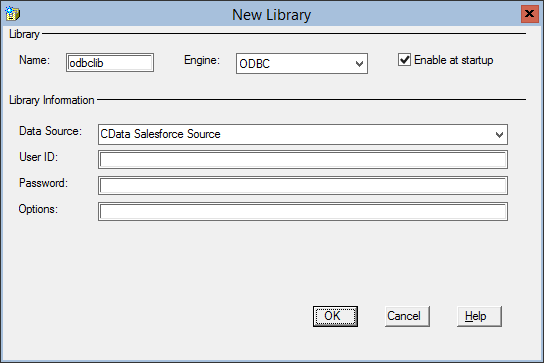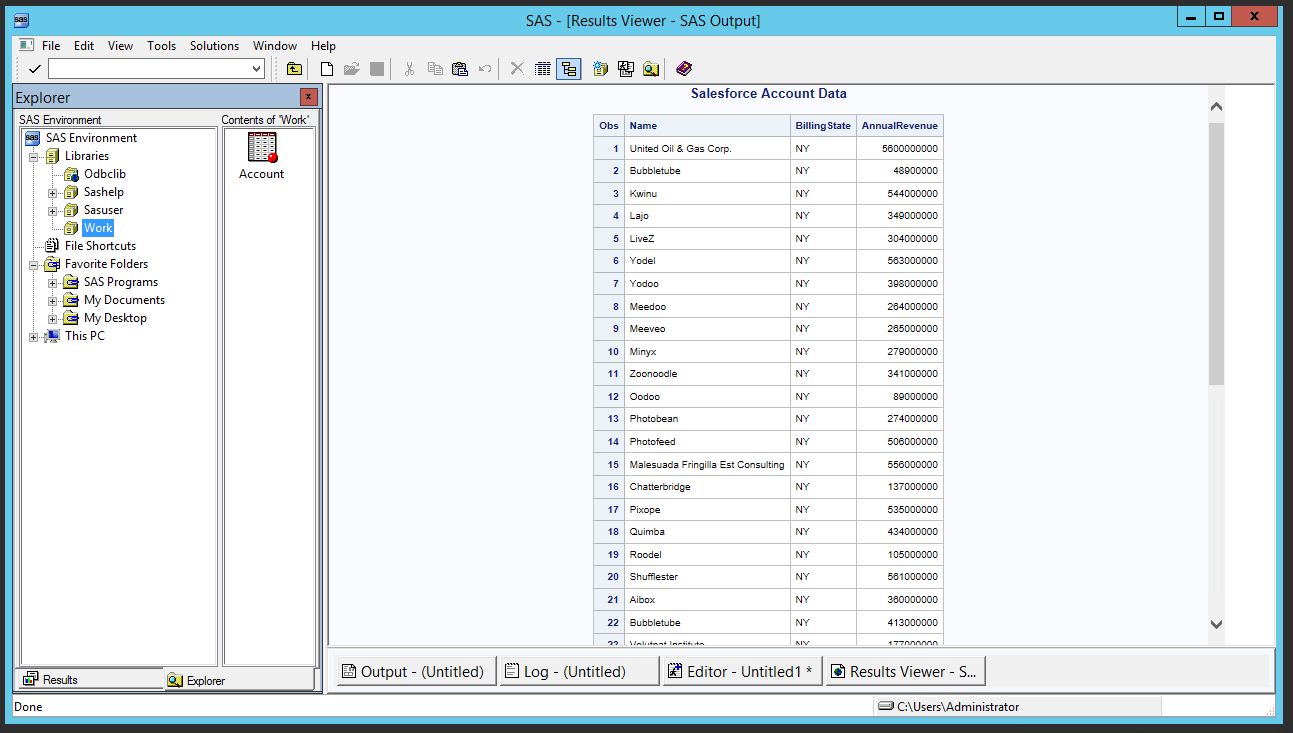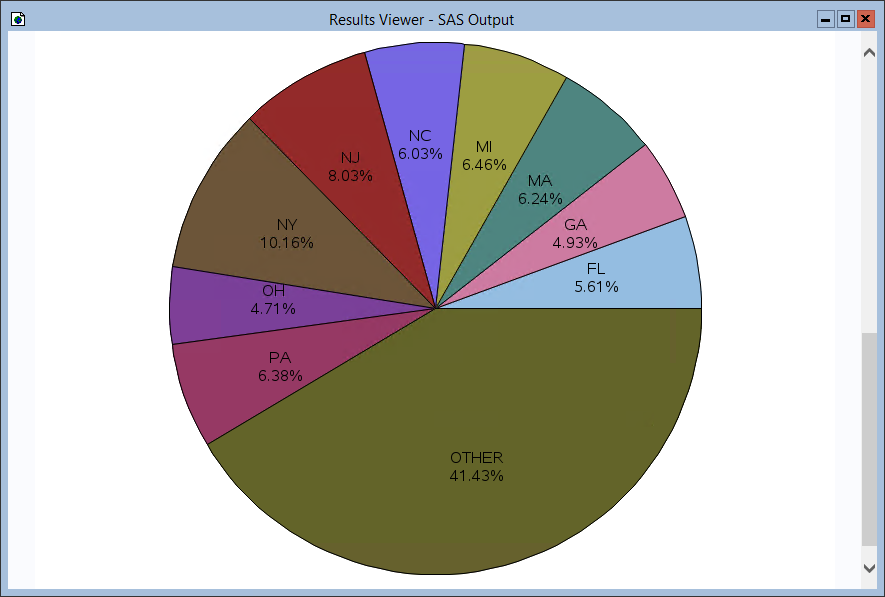Discover how a bimodal integration strategy can address the major data management challenges facing your organization today.
Get the Report →Use the CData ODBC Driver for JotForm in SAS for Real-Time Reporting and Analytics
Connect to real-time JotForm data in SAS for reporting, analytics, and visualizations using the CData ODBC Driver for JotForm.
SAS is a software suite developed for advanced analytics, multivariate analysis, business intelligence, data management, and predictive analytics. When you pair SAS with the CData ODBC Driver for JotForm, you gain database-like access to live JotForm data from SAS, expanding your reporting and analytics capabilities. This articles walks through creating a library for JotForm in SAS and creating a simple report based on real-time JotForm data.
The CData ODBC Driver offers unmatched performance for interacting with live JotForm data in SAS due to optimized data processing built into the driver. When you issue complex SQL queries from SAS to JotForm, the driver pushes supported SQL operations, like filters and aggregations, directly to JotForm and utilizes the embedded SQL engine to process unsupported operations (often SQL functions and JOIN operations) client-side. With built-in dynamic metadata querying, you can easily visualize and analyze JotForm data in SAS.
Connect to JotForm as an ODBC Data Source
Information for connecting to JotForm follows, along with different instructions for configuring a DSN in Windows and Linux environments (the ODBC Driver for JotForm must be installed on the machine hosting the SAS System).
Start by setting the Profile connection property to the location of the JotForm Profile on disk (e.g. C:\profiles\JotForm.apip). Next, set the ProfileSettings connection property to the connection string for JotForm (see below).
JotForm API Profile Settings
You will need to find your JotForm API Key in order to authenticate. To obtain an API Key, go to 'My Account' > 'API Section' > 'Create a New API Key'. Once you've created your new API Key, you can set it in the ProfileSettings connection property.
Custom Enterprise API Domains
Enterprise customers of JotForm are given custom API domains to connect to, rather than the default 'api.jotform.com' domain. If you are an enterprise JotForm customer, then set Domain to you custom API hostname, such as 'your-domain.com' or 'subdomain.jotform.com', inside the ProfileSettings connection property. Conversely, if you do not have a custom domain and still need to connect to 'api.jotform.com', then leave Domain undefined and set only APIKey.
When you configure the DSN, you may also want to set the Max Rows connection property. This will limit the number of rows returned, which is especially helpful for improving performance when designing reports and visualizations.
Windows
If you have not already, first specify connection properties in an ODBC DSN (data source name). This is the last step of the driver installation. You can use the Microsoft ODBC Data Source Administrator to create and configure ODBC DSNs.
Linux
If you are installing the CData ODBC Driver for JotForm in a Linux environment, the driver installation predefines a system DSN. You can modify the DSN by editing the system data sources file (/etc/odbc.ini) and defining the required connection properties.
/etc/odbc.ini
[CData API Sys]
Driver = CData ODBC Driver for JotForm
Description = My Description
Profile = C:\profiles\JotForm.apip
ProfileSettings = 'APIKey = my_api_key
Domain = my_custom_domain'
For specific information on using these configuration files, please refer to the help documentation (installed and found online).
Create a JotForm Library in SAS
Connect to JotForm in SAS by adding a library based on the CData ODBC Driver for JotForm.
- Open SAS and expand Libraries in the Explorer pane.
- In the Active Libraries window, right-click and select New.
- Name your library (odbclib), select ODBC as the Engine, and click to Enable at startup (if you want the library to persist between sessions).
- Set Data Source to the DSN you previously configured and click OK.
![Creating a library for JotForm in SAS.]()
Create a View from a JotForm Query
SAS natively supports querying data either using a low-code, point-and-click Query tool or programmatically with PROC SQL and a custom SQL query. When you create a View in SAS, the defining query is executed each time the view is queried. This means that you always query live JotForm data for reports, charts, and analytics.
Using the Query Tool
- In SAS, click Tools -> Query
- Select the table sources and the table(s) you wish to pull data from. Then, click OK.
![Selecting table(s) to visualize.]()
- Select columns and right-click to add filtering, ordering, grouping, etc.
![Selecting columns(s) to visualize and configuring the query.]()
- Create a local view to contain the query results by right-clicking the SQL Query Tool window, selecting Show Query, and clicking Create View. Name the View and click OK.
![Create a local view to work with JotForm data.]()
Using PROC SQL
- In SAS, navigate to the Editor window.
- Use PROC SQL to query the data and create a local view.
NOTE: This procedure creates a view in the Work library. You can optionally specify a library in the create view statement.proc sql; create view forms_view as select id, title from odbclib.forms where Status = 'ENABLED'; quit; - Click Run -> Submit to execute the query and create a local view.
Report On or Visualize JotForm Data in SAS
With a local view created, you can report, visualize, or otherwise analyze JotForm data using the powerful SAS features. Print a simple report using PROC PRINT and create a basic graph based on the data using PROC GCHART.
Print an HTML Report
- In SAS, navigate to the Editor window.
- Use PROC PRINT to print an HTML report for the JotForm Forms data.
proc print data=forms; title "JotForm Forms Data"; run;
![A simple JotForm data report.]()
Print a Chart
- In SAS, navigate to the Editor window.
- Use PROC GCHART to create a chart for the Forms data.
proc gchart data=forms; pie id / sumvar=title value=arrow percent=arrow noheading percent=inside plabel=(height=12pt) slice=inside value=none name='FormsChart'; run;![A simple JotForm data chart.]()












